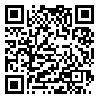Sun, Nov 23, 2025
[Archive]
Volume 34, Issue 1 (2-2020)
Med J Islam Repub Iran 2020 |
Back to browse issues page
Download citation:
BibTeX | RIS | EndNote | Medlars | ProCite | Reference Manager | RefWorks
Send citation to:



BibTeX | RIS | EndNote | Medlars | ProCite | Reference Manager | RefWorks
Send citation to:
Bagheri S H, Asghari A, Farhadi M, Shamshiri A R, Kabir A, Kamrava S K, et al . Coincidence of COVID-19 epidemic and olfactory dysfunction outbreak in Iran. Med J Islam Repub Iran 2020; 34 (1) :446-452
URL: http://mjiri.iums.ac.ir/article-1-6711-en.html
URL: http://mjiri.iums.ac.ir/article-1-6711-en.html
Seyed Hamidreza Bagheri 

 , Alimohamad Asghari
, Alimohamad Asghari 

 , Mohammad Farhadi
, Mohammad Farhadi 

 , Ahmad Reza Shamshiri
, Ahmad Reza Shamshiri 

 , Ali Kabir
, Ali Kabir 

 , Seyed Kamran Kamrava
, Seyed Kamran Kamrava 

 , Maryam Jalessi
, Maryam Jalessi 

 , Alireza Mohebbi
, Alireza Mohebbi 

 , Rafieh Alizadeh
, Rafieh Alizadeh 

 , Ali Asghar Honarmand
, Ali Asghar Honarmand 

 , Babak Ghalehbaghi
, Babak Ghalehbaghi 

 , Alireza Salimi
, Alireza Salimi 

 , Fatemeh Dehghani Firouzabadi
, Fatemeh Dehghani Firouzabadi 




 , Alimohamad Asghari
, Alimohamad Asghari 

 , Mohammad Farhadi
, Mohammad Farhadi 

 , Ahmad Reza Shamshiri
, Ahmad Reza Shamshiri 

 , Ali Kabir
, Ali Kabir 

 , Seyed Kamran Kamrava
, Seyed Kamran Kamrava 

 , Maryam Jalessi
, Maryam Jalessi 

 , Alireza Mohebbi
, Alireza Mohebbi 

 , Rafieh Alizadeh
, Rafieh Alizadeh 

 , Ali Asghar Honarmand
, Ali Asghar Honarmand 

 , Babak Ghalehbaghi
, Babak Ghalehbaghi 

 , Alireza Salimi
, Alireza Salimi 

 , Fatemeh Dehghani Firouzabadi
, Fatemeh Dehghani Firouzabadi 


ENT and Head and Neck Research Center and Department, The Five Senses Institute, Iran University of Medical Sciences, Tehran, Iran , ghalebaghi.b@iums.ac.ir
Abstract: (4295 Views)
Background: The occurrence of anosmia/hyposmia during novel Coronavirus disease 2019 (COVID-19) may indicate a relationship between coincidence of olfactory dysfunction and coronavirus disease 2019 (COVID-19). This study aimed to assess the frequency of self-reported anosmia/hyposmia during COVID-19 epidemic in Iran.
Methods: This population-based cross sectional study was performed through an online questionnaire from March 12 to 17, 2020. Cases from all provinces of Iran voluntarily participated in this study. Patients completed a 33-item patient-reported online questionnaire, including smell and taste dysfunction and their comorbidities, along with their basic characteristics and past medical histories. The inclusion criteria were self-reported anosmia/hyposmia during the past 4 weeks, from the start of COVID-19 epidemic in Iran.
Results: A total of 10 069 participants aged 32.5±8.6 (7-78) years took part in this study, of them 71.13% women and 81.68% nonsmokers completed the online questionnaire. The correlation between the number of olfactory disorders and reported COVID-19 patients in all provinces up to March 17, 2020 was highly significant (Spearman correlation coefficient = 0.87, P< 0.001). A sudden onset of olfactory dysfunction was reported in 76.24% of the participations and persistent anosmia in 60.90% from the start of COVID-19 epidemic. In addition, 80.38% of participants reported concomitant olfactory and gustatory dysfunctions.
Conclusion: An outbreak of olfactory dysfunction occurred in Iran during the COVID-19 epidemic. The exact mechanisms by which anosmia/hyposmia occurred in patients with COVID-19 call for further investigations.
Methods: This population-based cross sectional study was performed through an online questionnaire from March 12 to 17, 2020. Cases from all provinces of Iran voluntarily participated in this study. Patients completed a 33-item patient-reported online questionnaire, including smell and taste dysfunction and their comorbidities, along with their basic characteristics and past medical histories. The inclusion criteria were self-reported anosmia/hyposmia during the past 4 weeks, from the start of COVID-19 epidemic in Iran.
Results: A total of 10 069 participants aged 32.5±8.6 (7-78) years took part in this study, of them 71.13% women and 81.68% nonsmokers completed the online questionnaire. The correlation between the number of olfactory disorders and reported COVID-19 patients in all provinces up to March 17, 2020 was highly significant (Spearman correlation coefficient = 0.87, P< 0.001). A sudden onset of olfactory dysfunction was reported in 76.24% of the participations and persistent anosmia in 60.90% from the start of COVID-19 epidemic. In addition, 80.38% of participants reported concomitant olfactory and gustatory dysfunctions.
Conclusion: An outbreak of olfactory dysfunction occurred in Iran during the COVID-19 epidemic. The exact mechanisms by which anosmia/hyposmia occurred in patients with COVID-19 call for further investigations.
Keywords: Coronavirus, COVID, COVID-19, SARS-CoV-2, Anosmia, Smell, Hyposmia, Dysgeusia, Taste loss, Gustatory, Olfactory, Olfaction, Infection, ENT
Type of Study: Original Research |
Subject:
Otorhinolaryngology
Send email to the article author
| Rights and permissions | |
 |
This work is licensed under a Creative Commons Attribution-NonCommercial 4.0 International License. |





